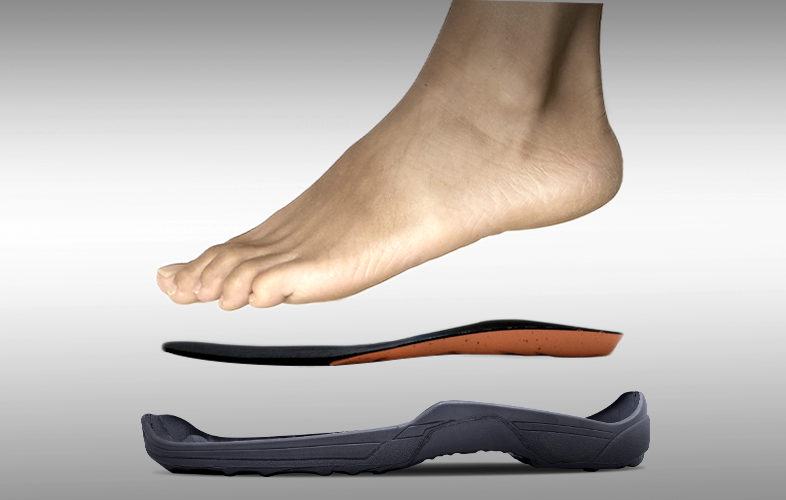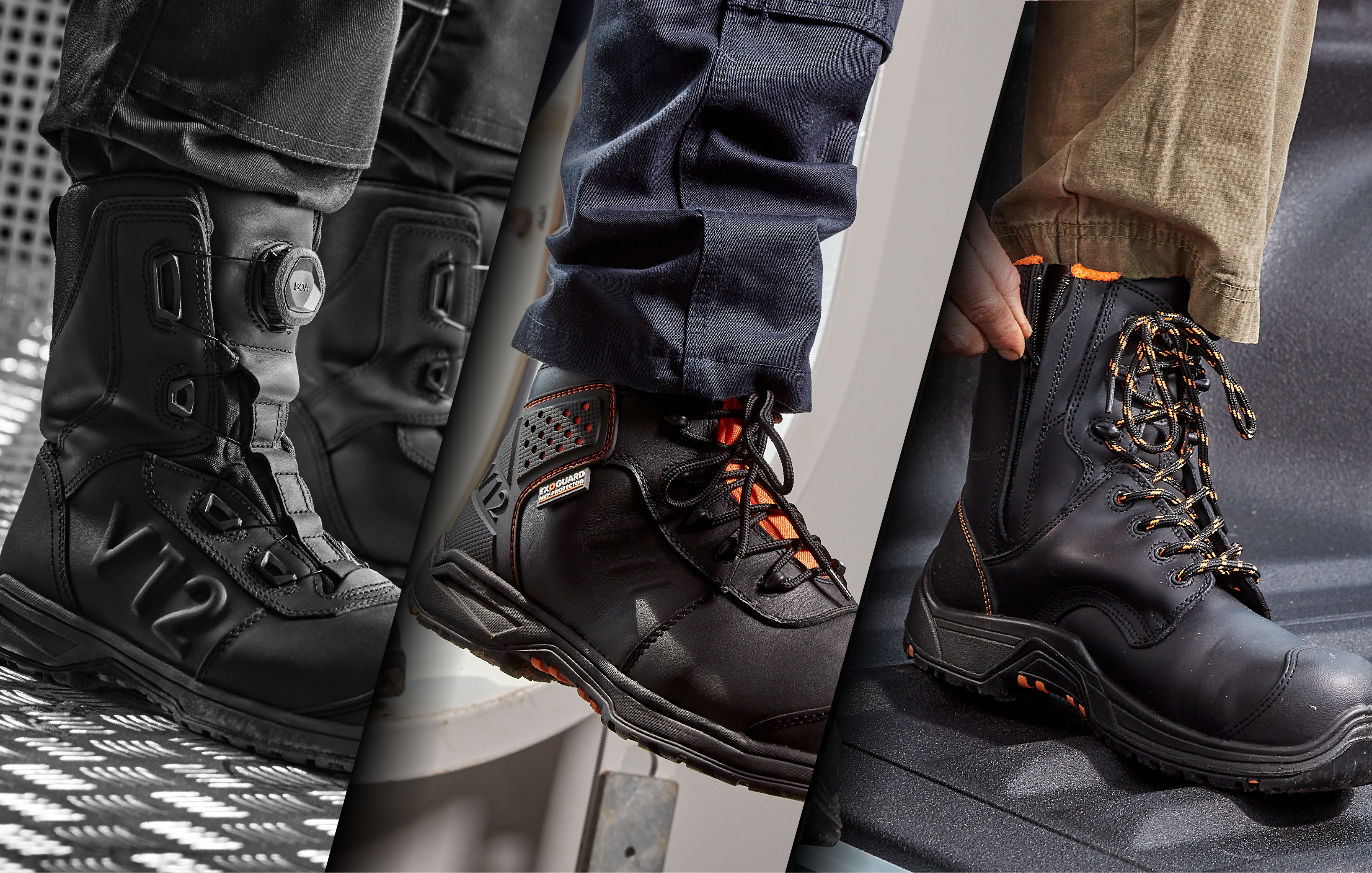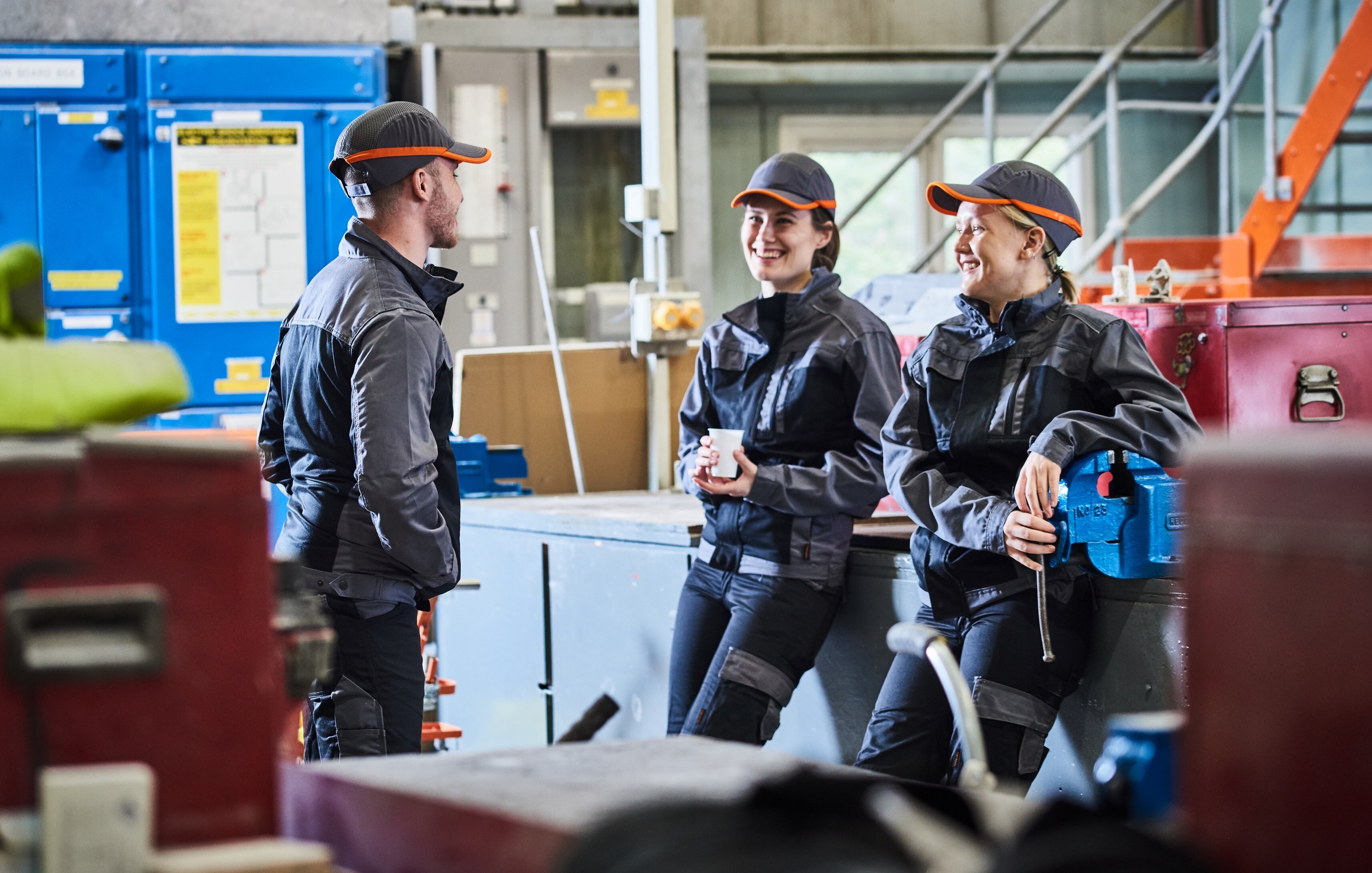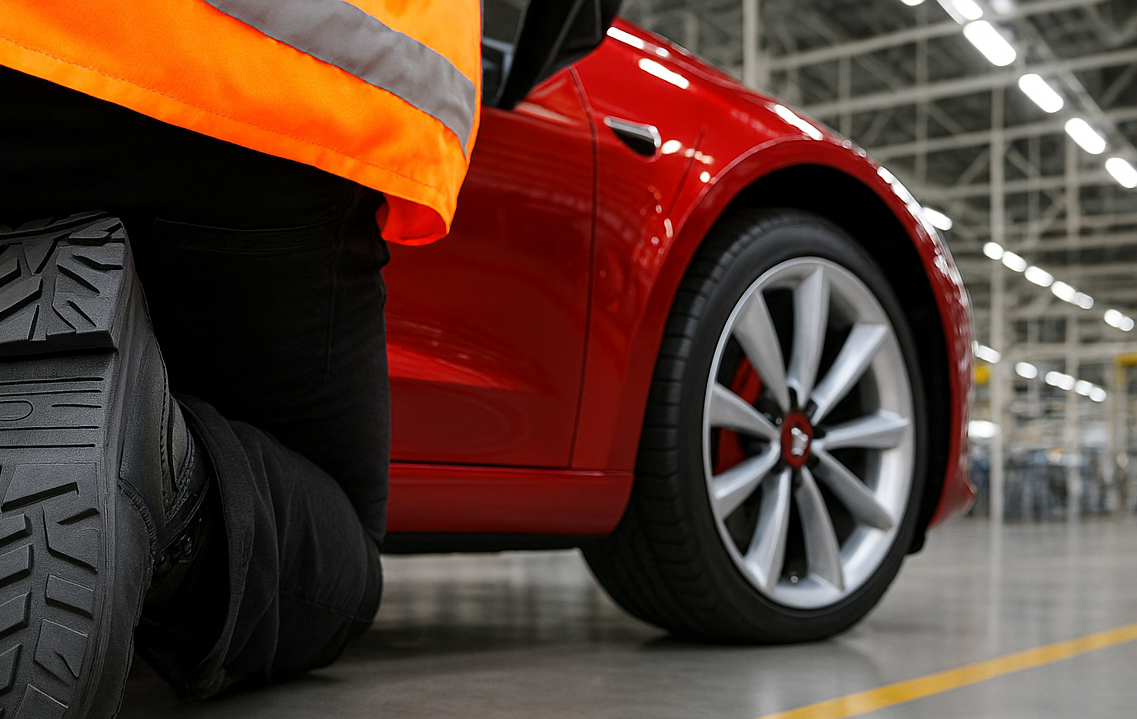WHAT IS FOOT FATIGUE?
Many assume that fatigue is the cause of general tiredness or a physically active day. But simply standing in one position for an extended period of time or taking many steps during the day can cause aching feet and painful foot cramps – and this is foot fatigue.
11 million UK workers stand up all day, while the average safety boot wearer walks up to 6 miles per day. So, if you fit into either of these groups, it’s important to have the best solution to prevent the very painful problem of foot fatigue.
WHAT IS ANTI-FATIGUE FOOTWEAR?
Anti-fatigue footwear is footwear designed to give added support and comfort to the foot with cushioning and shock-absorption. Let’s find out how.
SOLUTIONS FOR ANTI-FATIGUE – SAFETY BOOTS
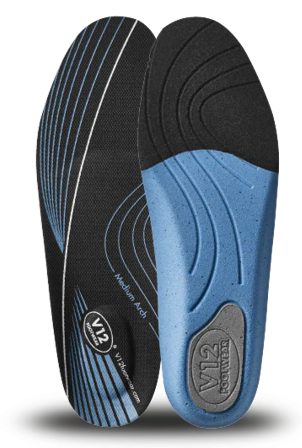 INSOLES
INSOLES
Good-quality insoles can offer a range of relief from the pain of foot fatigue when standing on hard floors or walking for prolonged periods. Here’s how.
- An insole that cushions the foot will ease pressure and maintain comfort, counteracting the strain and lack of shock-absorption of a hard floor.
- The best insole solution shouldn’t just provide cushioning for the ball and heel; it should support the arch too, as this area is more susceptible to strain. Remember, while the heel and ball take the pressure, it’s the arch that takes the strain of weight and movement.
V12’s Dynamic ArchTM insoles (pictured) were designed to include both these comfort properties. This range is made using durable open cell rebound foam, meaning they keep their shape whilst continuing to absorb impact for much longer.
To find out more about Dynamic ArchTM, click here.
CUSHIONED MIDLAYER 
A safety boot’s mid-layer (pictured) sits between the anti-penetration midsole and the outsole. This material can reduce foot fatigue because it adds another element of shock-absorption. So, if you're walking or standing on hard surfaces like concrete or Kennedy Grating, the mid-layer is vital, as it cushions the feet from the impact of walking and the body’s weight while standing.
The mid-layer of a boot offers varying cushioning depending on its material. For example, a boot’s mid-layer can be made with polyurethane (PU), but there are different densities of this material. An EVA polyurethane mid-layer will give more cushioning, as this material is more ‘spongey,’ whereas a rubber PU mid-layer will be less shock-absorbing, as rubber is harder than EVA.
So, if you work on softer, more cushioned surfaces such as grass or linoleum, a boot with a rubber PU midsole might not provide sufficient cushioning. However, on a hard surface, it might be worth considering a boot with an EVA PU midsole, and then doubling up on that cushioning with a boot also featuring an EVA outsole.
SHANK
 The shank is a small piece of material (pictured) that sits within the mid-layer. Because the wearer can’t see inside the mid-layer and view the shank at work, many don’t know it's there. But this small and sturdy component plays a vital role in the wearer's comfort and foot health, as it ensures the boot doesn’t over-flex, which reduces the chance of foot fatigue.
The shank is a small piece of material (pictured) that sits within the mid-layer. Because the wearer can’t see inside the mid-layer and view the shank at work, many don’t know it's there. But this small and sturdy component plays a vital role in the wearer's comfort and foot health, as it ensures the boot doesn’t over-flex, which reduces the chance of foot fatigue.
Note: Not all footwear contains a shank - in fact it's often an element that manufacturers miss out during production to save on cost and labour. The shank is a higher level component V12 use in our footwear to ensure comfort is maximised and foot pain reduced.
And all of these components ensure that the chances of cramping and fatigue are vastly reduced. Want to find out about how V12’s safety boot components ensure optimum comfort and cushioning? Read this blog.
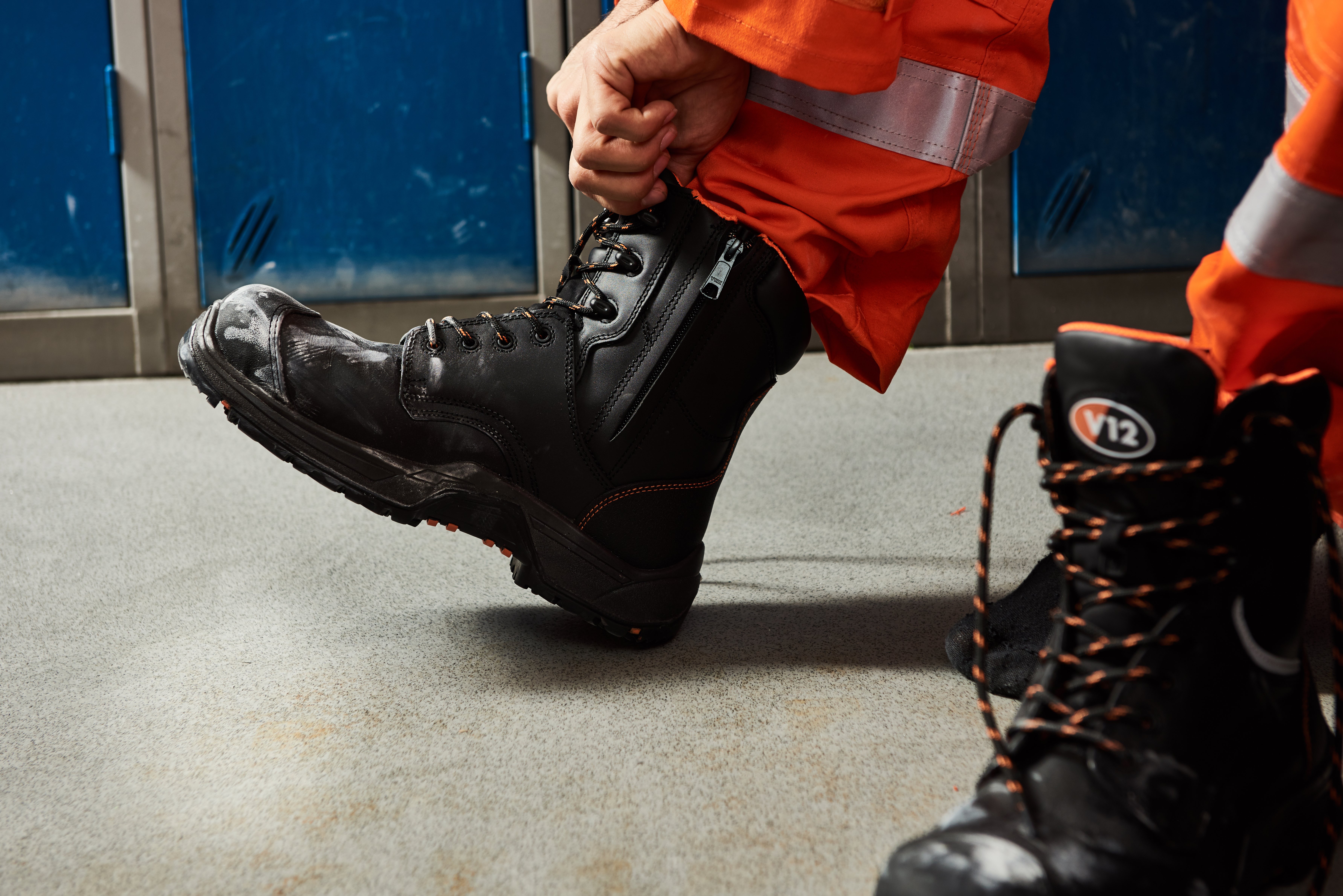
BUILT-IN COMFORT AND SAFETY
A boot designed to reduce foot fatigue, alongside the relevant footwear accessories, is a particularly appropriate solution for people who walk a lot on their shift, because the cushioning will be with them every step. In contrast, a person using an anti-fatigue mat (more on this below) is limited to just that space if they want to receive its benefits.
Many note that anti-fatigue mats offer slip resistance, but if your safety boot has the proper tread, your grip will go where you go, and won’t be limited to work carried out on the mat.
AN ANTI-FATIGUE ALTERNATIVE
ANTI-FATIGUE MATTING
To prevent foot fatigue due to prolonged standing, anti-fatigue matting can also be an effective solution.
ADVANTAGES
- Anti-fatigue mats provide cushioning that reduces foot pain by easing the pressure on feet
- These mats are an effective anti-fatigue solution for those who don't need safety footwear in their role but are standing for long hours
- Good anti-fatigue mats are designed to promote the small leg movements which stimulate circulation. This is an effective way to avoid foot fatigue, as it reduces blood pooling. See this blog for more information
- Because you can get large anti-fatigue mats, in a workspace with multiple people at the same workstation, the benefits of these mats can be shared
DISADVANTAGES - THE SLIP AND TRIP HAZARDS OF MATTING
- Anti-fatigue mats can come with their own risks. According to HSE data, a change in surface level is the second most common reason for tripping in the workplace. And these types of accidents can lead to serious and long-term injuries. And this is exactly what an anti-fatigue mat is: a change in the surface level, so this is worth bearing in mind if you’re deciding between footwear or matting to provide your anti-fatigue solution.
- Another potential risk of an anti-fatigue mat is that they are not secured to the floor, and this can offer up another potential slip or trip hazard. So, added to the inherent trip risk a mat poses by being a change of level in the floor surface, this anti-fatigue product's potential to create slips might mean that while it's a comfort and foot health solution, it's not necessarily a safety solution.
- Finally, as mentioned earlier in this article, anti-fatigue matting is only in specific places, whereas the comfort, grip and foot health benefits of a high-quality pair of safety boots are with the wearer wherever they go.
-2.jpg?width=364&height=330&name=V12%20staff%20wellbeing%20(rail)-2.jpg)
TRUST IN HIGH-QUALITY
As you can see, there are a couple of anti-fatigue solutions at your disposal.
The key thing to remember is that while anti-fatigue matting can support the feet and encourage good circulation, if you’re working in an environment where safety boots are required, then this matting might not be sufficient. In fact, you could arguably be adding another trip, slip or fall hazard to your surface.
With a boot designed for comfort featuring high-performing insoles, you’ll have a range of supportive and cushioning benefits at your disposal to enjoy total comfort and high-performance.
Do you need an anti-fatigue safety boot? If so, head to the V12 Boot Finder. This easy-to-use tool gives you your best pick safety boot based on our expert industry knowledge – all you need to do is tell us your safety and comfort requirements such as your environment and conditions, and with just a few clicks, we’ll give you a boot that keeps you pain-free and productive.

